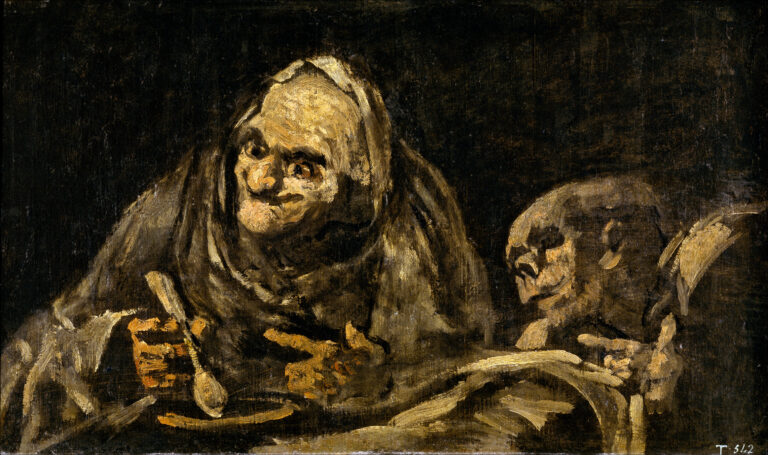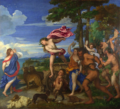The color black does not reflect light. In fact, the color absorbs light, along with our dreams, our fears, our terrors and nightmares. For artists, black paintings often represents our deepest, darkest thoughts and secrets. Perhaps this vulnerability makes it one of more difficult colors to work with, and many painters — Monet among them — avoided it altogether. So how do artists use black paint?
At its most basic, black paint creates lines and a strong (the strongest!) contrast on white paper or canvas. But it has more to offer, and can be one of the most important tones on a painter’s palette.
How to make black paint
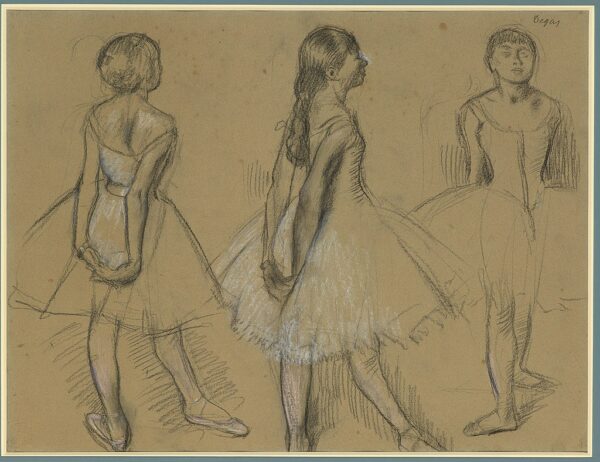
Charcoal
The first step in our exploration of black in art is charcoal. As much a medium as it is a color, charcoal is simply made from burnt wood. And if you use charcoal with a rough-surfaced paper and fingers and thumbs, it can be a thrilling and messy experience, whatever your skill level. Artists like Edgar Degas and Leonardo da Vinci created many masterpieces with this simple medium. Charcoal is also used as a pigment in black paint.
TIP: Start with still lifes if you are a beginner with charcoal — you can get great results.
The science of charcoal
Charcoal is made from carbonized grape vine or willow wood and is produced by slowly heating the wood and other substances in the absence of oxygen. You can generally use charcoal in two ways: pressed into sticks of various density and size or as a powder.
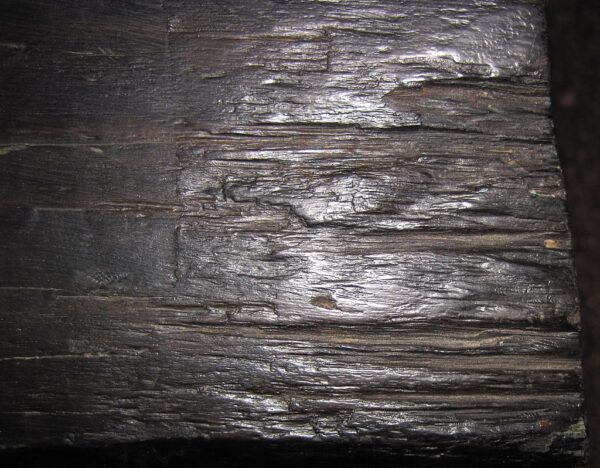
Ebony
This black ornamental wood, which can be ground down to create pigment for black paint, has been used for millennia as a decorative material, for art, furniture and even found in Egyptian tombs. It’s a dense wood (it does not float in water), making it a great choice for sculpture.
Ebony trees are native to western Africa, and sculptures, masks and beads created from the precious hardwood are familiar and often copied. Examples of its use can be seen at The Smithsonian Institute’s National Museum of African Art. In Western art, ground ebony pigment is used in some paints, and usually can be identified by its name: ebony black.
DIY black paint
Black is not simply harvested from the natural world or a periodic table, it can be created using other colors.
The best way to make black paint is by mixing the primary colors (red, blue and yellow) together. All in equal measures to create a basic black. Try mixing up those measurements, if you forgive the pun, for endless variations of hue. And no two mixes will be the same, making black as exciting to use as primary colors! It really does deserve to come off the sidelines.
Mixing it yourself also means artists don’t need to buy it (it’s usually used in such small quantities that even a small tube can dry out).
How to use black paint in art
Artists usually limit their use of black to mix with other hues to create a darker shade. Its use in a pure form is unusual beyond outlines, or it was until the 20th century, when artists began to obfuscate their depictions with dark black canvases.
The darkness of black paint requires a heavy pigment-to-oil ratio, which gives this oil paint one of the most delicious textures. It is this texture, as much as the skill required to mix the perfect hue, that attracted so many abstract painters in the 20th century.
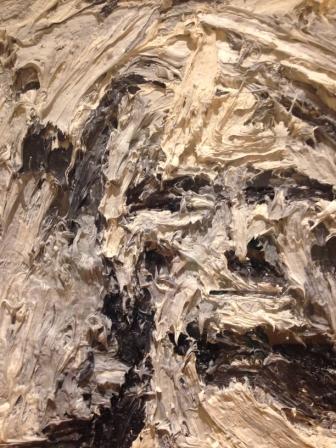
Wet on wet
Black is to shadow what white is to light. In artist speak, black represents the dark, the night, or tenebrae, offsetting the light in chiaroscuro.
Working wet paint onto a canvas of wet paint allows the hues to mix in real time. Artists like Frank Auerbach excelled at this. Because of this, his work was immediate, made decisively and risky (considering the amount of paint he used). With other colors this can be highly successful, but with black, it can be tricky. Start with the darker color beneath because it’s easier to darken than it is to lighten.
Picking your pigment
If doing your own mixing sounds a little advanced, buy a few different black paints and ink and brush them side by side — you will see that black paint still has many, many hues.
Among your choices are: ivory black (so-called as it was once made from ivory), Mars black, chromatic black (made from a metal oxide), and Payne’s grey (not strictly a black, but an incredibly versatile hue for those looking to create shadow).
Famous black paintings

Goya’s Black Paintings
In his later years, Francisco Goya created a series of 14 so-called Black Paintings. He was never known for his sunny works of art, and these somber paintings reflected his bleak post-Napoleonic-war outlook on the future of humanity and his own life (he suffered many illnesses). Some of the Black Paintings were painted directly on to the walls of his house. Later an art collector would chip these powerful images of humankind’s cruelty off the walls and attach them to canvas.
Where can you see Goya’s Black Paintings
Goya’s Black Paintings were donated to his native Spain 150 years ago and are now housed in the Museo del Prado.
Kazimir Malevich
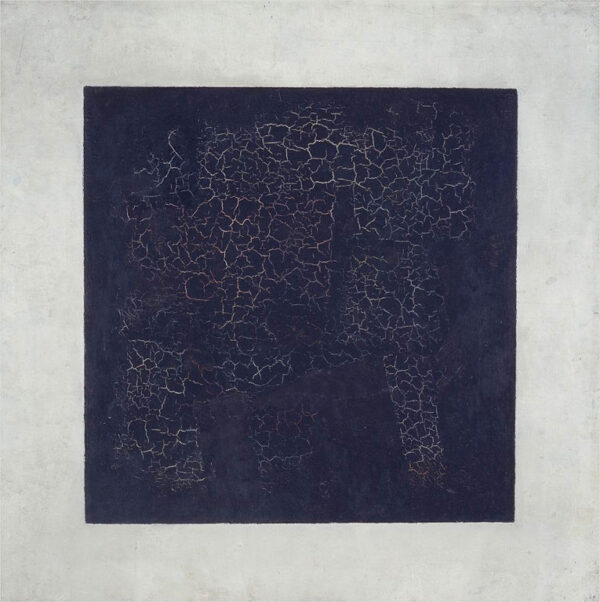
The Russian artist Kazimir Malevich changed all that in the 20th century with his Suprematist painting Black Square. This was an art world game changer. Malevich turned his back on figurate art and the representation of anything discernibly based on reality. He believed in the supremacy of color and shape in painting. And he created one of the first all black paintings, which brings us nicely on to…
All-black paintings
The Abstract Expressionists and colorfield painters of the 1950s explored the endless possibilities and variations of black. And yet, the work can still feel difficult to understand.
Frank Stella
The American artist Frank Stella produced the first of his Black Paintings series in the late 1950s. Stella was a precocious talent who painted a whole suite of monochromatic paintings, with black being the dominant color. They are in some ways proto–Bridget Riley works, without distorting and contorting the optical senses in the same way Riley later did in the 1960s and beyond.

Agnes Martin
Another American artist, Agnes Martin produced her own black paintings in the 1980s. These paintings (often shades of dark gray) are more tactile and less hostile than Frank Stella’s. And if you look carefully, you can see they feel less rigid and geometric than her fellow black painting artists and are more playful.
Ad Reinhardt
This Abstract Expressionist painter finds his way into artists who love to use black and white (although never together). His work of pure black canvases have often been figures of ridicule, but the black is not random. At the same time, you could argue that they are not black at all. Ad Reinhardt mixed his black paint with other colors to create slight variations that only really become visible from standing and looking at them, sometimes for a long time. Check out these MoMA videos for a look at Reinhardt’s interesting use of black.
Robert Raushenburg
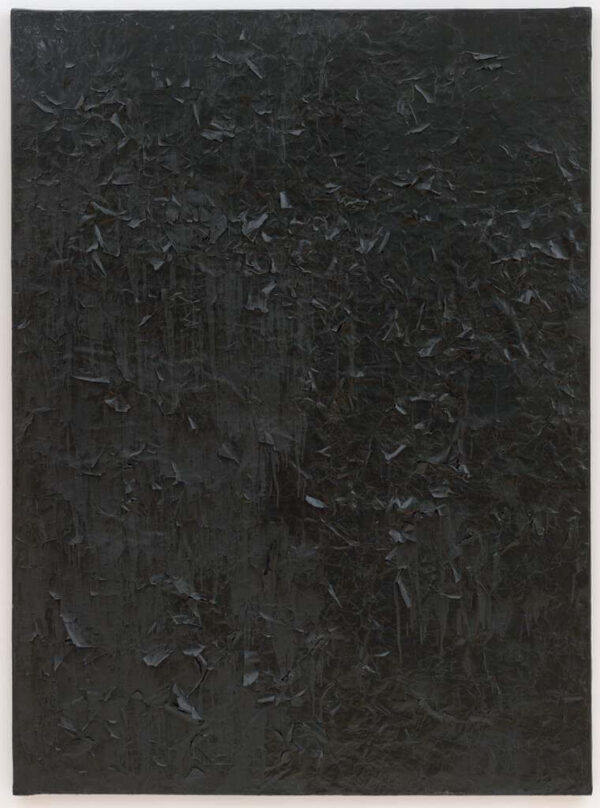
Another famous name from 1950s American art, is Robert Rauschenburg. He teamed up his pure black paintings with newsprint, which was sometimes visible beneath the paint. He created black panels using matte or glossy black paint, and was also a proponent of pure white paintings.
Pierre Soulages
Moving away from the US, the recently deceased French artist Pierre Soulages (who died at the grand old age of 102) took black on white mark making to giddy heights. His monumental and paint-rich black canvases were sculptural and almost architectural in depth and form. They hung in the gallery like giant edifices of pure paint reflecting and refracting the light.
Ludwig Mies van der Rohe
Black isn’t only a color for painters. Some of the most famous building’s by imperious, cigar-chugging German architect Mies van der Rohe were dowsed in black mullions and dark glass. Prime examples include Chicago’s Federal Central Plaza, New York’s Seagram building, and Berlin’s Neue Nationalgalerie, where the art very much plays second fiddle to Mies van der Rohe’s design.

